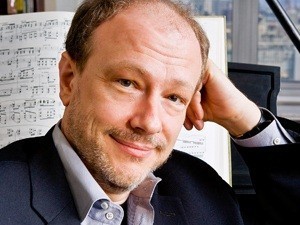|
Back
An Admiration and an Apology New York
Isaac Stern Auditorium, Lincoln Center
01/19/2016 -
Wolfgang Amadeus Mozart: Piano Sonata in C Major K. 545
Ferruccio Busoni: An die Jugend: “Giga, bolero e variazione” (after Mozart)
Maurice Ravel: Gaspard de la nuit
Marc-André Hamelin: Pavane variée (NY Premiere)
Franz Liszt: Piano Sonata in B Minor
Marc-André Hamelin (Pianist) 
M.-A. Hamelin (© Fran Kaufman)
Before last night’s recital by Marc-André Hamelin, a friend and I wondered about composers who could set an Edgar Allen Poe short story to music. Amongst others we thought of Maurice Ravel, especially because of his Gaspard de la nuit, which he was to play in the next few minutes.
We were wrong. Once Mr. Hamelin began “Scarbo”, that frightening last movement of Gaspard, I realized that Ravel had already written his Poe, that words were superfluous to the frightening notes produced by this great artist.
In yesterday’s review, I had words which I regret now about Mr. Hamelin. Partly, because the last time I heard him, he had played the Dvorák Piano Concerto. Not the best Dvorák by any means, but Mr. Hamelin ran through the notes without care, took a bow, walked off the stage and never appeared again. It was okay piano-playing but perfunctory performing.
Secondly, though, Marc-André Hamelin is simply too good, too perfect, his memory (for the works of both mainstream and obscure composers) is inhuman, he makes the most difficult music seem easy...
Who would not have doubts about him?
If so, last night proved us wrong. Mr. Hamelin began with a work which every piano student knows–supposedly!–from their first month. Mozart’s C Major Sonata. Hopefully, those students weren’t in the audience, for they could never ever duplicate that fountain of notes, those supposedly simple runs which, under Mr. Hamelin’s digits, sounds like a Stradivarius glissando. No matter what we had heard before, this was a revelation.
Actually, the first half of the program had a childish glee. Busoni is not exactly child’s play, but his own refiguration (from two Mozart dances–jig and bolero) can be awfully difficult. Not, though, for Mr. Hamelin. I haven’t heard him perform more inscrutable Busoni music, but these wondrous piano tales were lustrous works encompassing late 18th Century and early 20th Century.
In a way, the Busoni was like Marc-André Hamelin’s own compositions, all of which (or those I have heard) are variations on older music. His Pavane variée last night was typical. Mr. Hamelin had taken a familiar 16th Century piece by the unfamiliar Thoinot Arbeau, playing variations which became more and more difficult. If the openings were like Brahms variations, Mr. Hamelin became more involved, the music was Impressionistic, then dissonant with tone clusters.
All of it impossibly difficult–like the artist’s encore of the Earl Wild variations on Gershwin’s Liza–and played with that ineffable charm of a magician doing an insoluble card trick without losing a beat.
This review began with the Ravel Gaspard de la nuit, and Mr. Hamelin started with those virtual glissando notes of watery ripples. Other pianists bring that theme out of these ripples like Venus from the waves. Mr. Hamelin, somehow, let those notes not only increase in volume, but they began to actually float. Ravel had hopelessly suggested this; Mr. Hamelin achieved it. Just as he achieved the ghostly bells in “Le Gibet”.
But now to “Scarbo”, the ghastly dances of a dwarf–and in my own dreams, the reproduction of Edgar Allen Poe’s dwarf story, too horrifying for reproducing in “Poe’s Best” books. Ravel’s dwarf scampered and pranced, toddled and scuttled and violently murdered. Yet Mr. Hamelin never ever let this dwarf fly away. It was an awesome performance.
Mr. Hamelin’s major surprise was in Liszt’s B Minor Sonata. One would expect such a powerful artist to render this work with explosions, extended chorales, a ultra-romantic resonances. But no. The Hamelin artistry–which I had slighted yesterday–gave this work not only a flowering, a fluidity, but the gracefulness allowing Liszt’s long philosophical tone-poem to breathe.
The most daunting element here is not the most important: making this music cohere. I have heard more personal or even “spiritual” interpretations. But Mr. Hamelin gave it structure, architecture, unity.
With such confidence and strength, we could choose our own meanings, if we wished. For myself, Mr. Hamelin’s music was significant enough in itself, and his recital an exercise in both artistry and substance.
Harry Rolnick
|